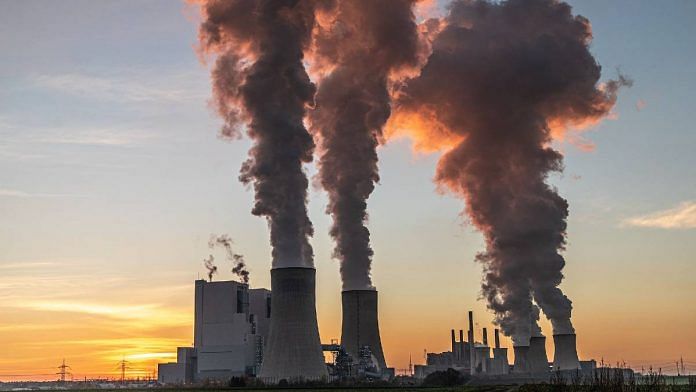New Delhi: Nine renewable energy projects in India aimed at reducing greenhouse gas emissions have been classified as “likely junk” in an analysis by Corporate Accountability, a non-profit organisation, and The Guardian.
The report, published in The Guardian Tuesday, looks at the data provided by AlliedOffsets, a repository of carbon offset projects — which claim to reduce, or ‘offset’, carbon emissions in the atmosphere — from around the world.
An analysis of the top 50 carbon offset projects in the world identified 39 as “likely junk”. According to the report, the top carbon offset projects in India and several other countries, including Brazil, Kenya, and Ethiopia, are “worthless” and do not account for cutting any extra greenhouse emissions.
The nine such projects in India include five hydroelectric dams, two solar plants, and two wind farms, data showed.
“The vast majority of the environmental projects most frequently used to offset greenhouse gas emissions appear to have fundamental failings, suggesting they cannot be relied upon to cut planet-heating emissions,” the report said.
In numbers, these 50 projects have seen a combined investment of over $1.16 billion by companies across the world, the report said.
The analysis looked at the benefits of carbon credits (or carbon offsets) in the voluntary carbon market (VCM), which gives companies, NGOs, governments, and individuals the opportunity to buy and sell carbon offset credits.
Carbon offset credits are essentially entities that can be bought and sold, and each credit represents one metric tonne reduction in CO2 emissions.
The analysis found that of the 50 highest credit-selling projects analysed, 47 were in Asia, Africa, and Latin America, while only three were in the US.
For their analysis, The Guardian and Corporate Accountability used criteria from reports, such as one done by Berkeley’s Goldman School of Public Policy, to investigate the effectiveness of the carbon offset projects. It ranked projects on parameters like baseline impact, which is the real amount of emissions that would have happened in case the project had not come up.
It stated that projects often exaggerate the baseline impact, and thus the actual cut in emissions. On the basis of this, projects were categorised as “likely junk” or “potentially junk” in terms of climate benefits. For some projects, enough information was not available for an assessment.
Another major criterion on which carbon offset projects were assessed was whether the emission reduction was “non-additional” i.e. had there been no carbon market, would the project still reduce emissions?
This was meant to ascertain whether the voluntary carbon market was leading to additional and permanent reductions in emissions, and not just investment in projects “that would have happened independently anyway”.
Data from AlliedOffsets showed that India sold the highest number of credits in the total VCM in the year 2022, amounting to $48.8 million. The Guardian report, however, stated that most of the projects in India were “likely junk” due to the fact that they did not seem to add any “additional” benefits or carbon reductions.
Other projects categorised as “likely junk” included a forest conservation project in Zimbabwe and the world’s largest carbon storage plant in Wyoming, US.
Also read: Green think tank CEEW suggests EU & Korea-like ‘emissions trade’ for India’s carbon market launch
All about carbon markets
The carbon credit market is gaining increasing significance in the international sphere, with governments, corporations, and private companies using it to reduce their carbon footprint.
How it works is that companies that want to reduce carbon emissions can choose to buy carbon credits by investing in environmental projects that will either remove or reduce carbon from the atmosphere.
“Credits are basically the equivalent of carbon emissions that companies want to reduce,” Trishant Dev, climate change researcher at Centre for Science and Environment, told ThePrint.
However, even within carbon markets there are two different kinds — compliance carbon markets and voluntary carbon markets.
“Compliance markets are regulated by governments in different countries, and participation is also mandated. But voluntary markets are, as the name suggests, voluntary for companies and individuals. They generally don’t fall under government regulation,” said Dev.
It is the voluntary markets that face the issue of lack of regulation, and thus exaggerated carbon reduction claims. In voluntary markets, credits for every carbon offset project need to be certified and are usually done by independent organisations such as Verra.
Verra certified two-thirds of the credits of the projects in the AlliedOffsets report and was previously reported to have come under fire for certifying credits for “worthless” projects.
Explaining how voluntary carbon credits function in India, Dev said: “There used to be an organisation entity called the Clean Development Mechanism which authorised projects in the compliance carbon markets in India. In the voluntary market though, there is no such entity that records or authorises the carbon offset projects in India.”
(Edited by Zinnia Ray Chaudhuri)
Also read: Coastal habitats absorb more greenhouse gases than they emit, finds Nature study



